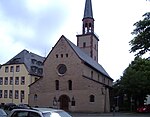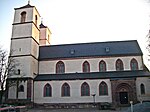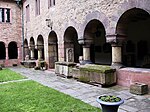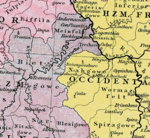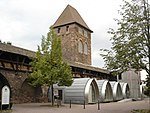Luther Monument (Worms)
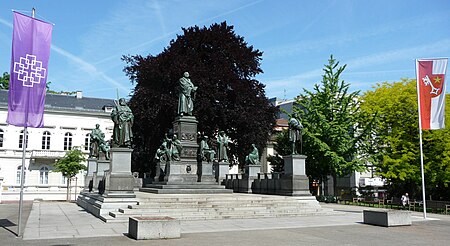
The Luther Monument (German: Lutherdenkmal) is a group of statues that was erected in Worms, Rhineland-Palatinate, Germany, to commemorate the Protestant reformer Martin Luther. It was designed and partly made by Ernst Rietschel, and unveiled on 25 June 1868. The monument includes a group of bronze statues on stone plinths centred on a statue of Luther, surrounded by statues of related individuals and allegorical statues representing related towns. The elements are arranged in the shape of a castle, reflecting Luther's hymn "A Mighty Fortress Is Our God" ("Ein feste Burg ist unser Gott" in German). It is one of the largest Luther Monuments, and shaped views of the reformer. Copies of the central Luther statue are located in Europe and the United States, including the Luther Monument in Washington, D.C. (1884).
Excerpt from the Wikipedia article Luther Monument (Worms) (License: CC BY-SA 3.0, Authors, Images).Luther Monument (Worms)
Lutherring,
Geographical coordinates (GPS) Address External links Nearby Places Show on map
Geographical coordinates (GPS)
| Latitude | Longitude |
|---|---|
| N 49.6323 ° | E 8.3601 ° |
Address
Lutherdenkmal
Lutherring
67547 , Worms-Zentrum (Innenstadt)
Rhineland-Palatinate, Germany
Open on Google Maps



